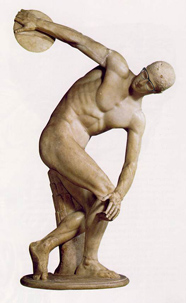
Keep Your Eyes on the Prize
The American Academy of Ophthalmology (AAO) has designated April 2012 as Sports Eye Safety Month to help increase public awareness of wearing protective eyewear when participating in team sports. According to the AAO:
- An estimated 40,000 sports eye injuries occur every year. The majority of victims are children, many of whom suffer permanent visual impairment
- Baseball and basketball account for the largest number of injuries among young athletes
- Little League pitchers can achieve pitching speeds up to 70 mph, fast enough to seriously damage an eye
- In basketball, serious eye injuries caused by flying fingers and elbows can be prevented by wearing appropriate protective eyewear
- Studies have shown that more than 90% of eye injuries can be prevented, simply by wearing the right protective eyewear
On a related note, today marks the anniversary of the first Modern Olympic Games. On April 6, 1896, King Georgios I of Greece and a crowd of 60,000 spectators welcomed athletes from 13 nations to the international competition held in Athens.
The 280 Olympic athletes competed in 43 events, covering track-and-field, swimming, gymnastics, cycling, wrestling, weightlifting, fencing, shooting, and tennis. All the competitors were men, and a few of the entrants were tourists who stumbled upon the Games and were allowed to sign up. The track-and-field events were held at the Panathenaic Stadium, which was originally built in 330 B.C. and restored for the 1896 Games.
The 1896 Olympics also featured the first marathon competition, which followed the 25-mile route run by a Greek soldier who brought news of a victory over the Persians from Marathon to Athens in 490 B.C. In 1924, the marathon was standardized at 26 miles and 385 yards. Appropriately, a Greek, Spyridon Louis, won the first marathon at the 1896 Athens Games.
The ancient Olympics, which date back to 776 BC, occurred during a religious festival honoring the Greek god Zeus every four years. Initially, Olympic competition was limited to foot races, but later a number of other events were added, including wrestling, boxing, horse and chariot racing, and military competitions. With the rise of Rome, the Olympics declined, and in 393 A.D. the Roman Emperor Theodosius I, a Christian, abolished the Games as part of his efforts to suppress paganism in the Roman Empire.
With the Renaissance, Europe began a long fascination with ancient Greek culture, and in the 18th and 19th centuries some nations staged informal sporting and folkloric festivals bearing the name “Olympic Games.” However, it was not until 1892 that a young French baron, Pierre de Coubertin, seriously proposed reviving the Olympics as a major international competition that would occur every four years. At a conference on international sport in Paris in June 1894, Coubertin again raised the idea, and the 79 delegates from nine countries unanimously approved his proposal. The International Olympic Committee (IOC) was formed, and planned those first games in 1896.
*****
Please click here to learn more about the M&S Pro Sports Vision Testing System (PSVTS). The PSVTS has proven to identify and analyze the five areas of vision that are critical in evaluating athletes.
Olympic info excerpted from This Day in History
Have a thought about this article? Contact Us and let us know.